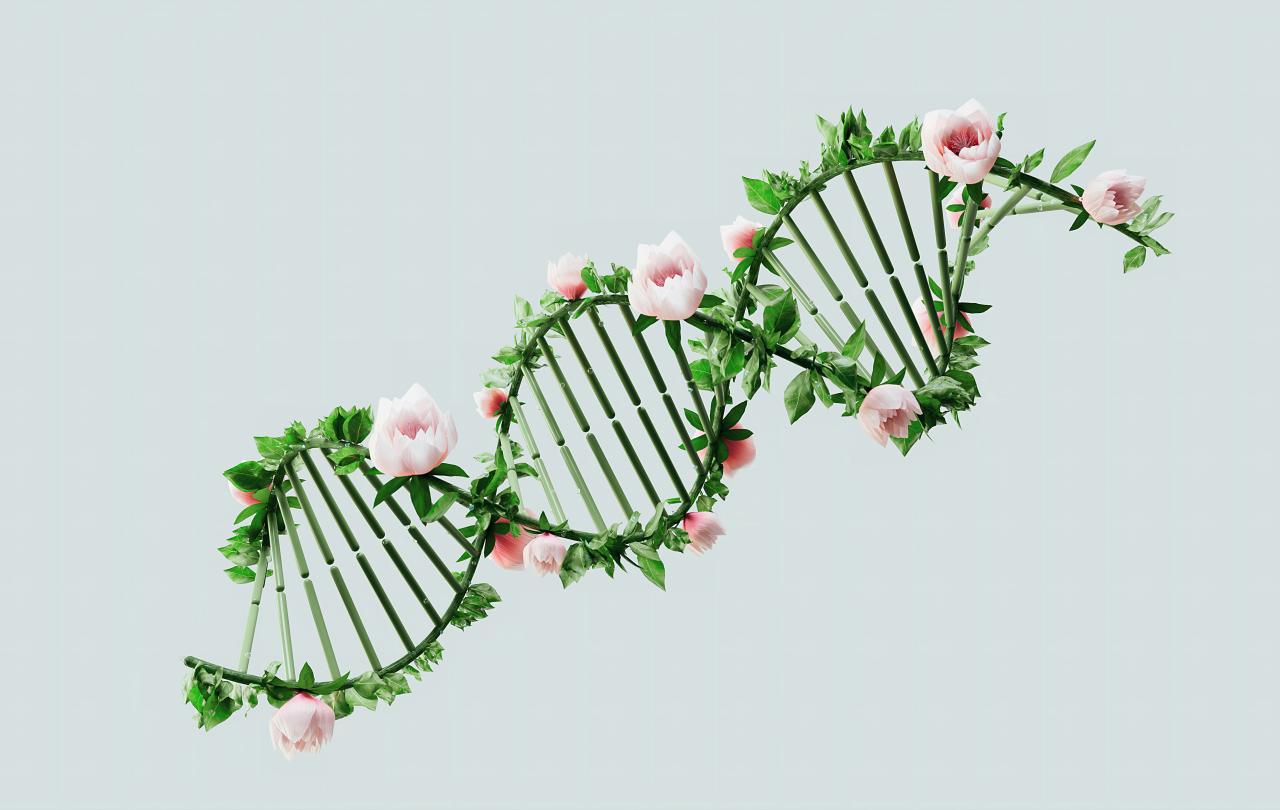
It makes me feel very old when I realise that Louise Brown, the first baby to be born via in vitro fertilisation (IVF), will be 47 years old on July 25th this year. Since her birth in 1978, over 10 million IVF-conceived babies have been born worldwide, of whom about 400,000 have been in the UK. Over that period, success rates have increased such that in some clinics, about 50 per cent of IVF cycles lead to a live birth. At the same time, there have also been significant advances in genetics, genomics and stem cell biology all of which, in relation to human embryos, raise interesting and sometimes challenging ethical issues.
I start with a question: what is the ‘moral status’ of the early human embryo? Whether the embryo arises by normal fertilisation after sexual intercourse or by IVF, there is a phase of a few days during which the embryo is undergoing the earliest stages of development but has not yet implanted into the wall of the uterus; the prospective mother is not yet pregnant. In UK law, based on the Human Fertilisation and Embryology Act (1990), these early embryos are not regarded as human persons but nevertheless should be treated with some respect. Nevertheless, there are some who oppose this view and believe that from the ‘moment of conception’ (there actually isn’t such a thing – fertilisation takes several hours) embryos should be treated as persons. In ‘conventional’ IVF this debate is especially relevant to the spare embryos that are generated during each IVF cycle and which are stored, deep-frozen, in increasing numbers for possible use in the future.
A further dimension was added to this area of debate when it became possible to test IVF embryos for the presence of genetic mutations that cause disease. This process is called pre-implantation genetic diagnosis and enables prospective parents who are at known risk of passing on a deleterious mutation to avoid having a child who possesses that mutation. But what about the embryos that are rejected? They are usually discarded or destroyed but some are used in research. However, those who hold a very conservative view of the status of the early embryo will ask what right we have to discard/destroy an embryo because it has the ‘wrong genes’. And even for the many who hold a less conservative view, there are still several questions which remain, including ‘which genetic variants we should be allowed to select against?; should we allow positive selection for genes known to promote health in some way?’; should we allow selection for non-therapeutic reasons, for example, sporting prowess?’ These questions will not go away and there are already indications that non-therapeutic selection is being offered in a small number of countries.
Genetic modification
This leads us on to think about altering human genes. Initially, the issue was genetic modification (GM) which in general involves adding genes. GM techniques have been used very successfully in curing several conditions, including congenital severe immune deficiency and as part of treatment programmes for certain very difficult childhood cancers. One key feature of these examples is that the genetic change is not passed on to the next generation – it just involves the body of someone who has already been born. Thus, we call them somatic genetic changes (from the Greek, sōmatikos, meaning ‘of the body’).
Genetic modification which is passed on to the next generation is called germline GM which means that the genetic change must get into the ‘germ cells’, i.e., the sperm or egg. Currently, the only feasible way of doing this is to carry out the genetic modification on the very early embryo. At present however, with just one very specific exception, GM of human embryos is forbidden in all the countries where it would be possible to do it. There is firstly the question of deciding whether it is right to change the genetic makeup of a future human being in such a way that the change is passed to succeeding generations. Secondly, there are concerns about the long-term safety of the procedure. Although it would involve adding specific genes with known effects, the complexity of genetic regulation and gene interactions during human development means that scientist are concerned about the risks of unforeseen effects. And thirdly, germline GM emphasises dramatically the possibility of using GM for enhancement rather than for medical reasons.
Genome editing
This leads us to think about genome editing. In 2011, it was shown that a bacterial system which edits the genomes of invading viruses could also work in other organisms This opened up a large array of applications in research, agriculture and medicine. However, the ethical issues raised by genome editing are, in essence, the same as raised by GM and so there is still a universal prohibition of using the technique with human embryos: germline genome editing is forbidden. Despite this, a Chinese medical scientist, He Jiankui, announced in 2018 that he had edited the genomes of several embryos, making them resistant to HIV; two babies with edited genomes had already been born while several more were on the way. The announcement caused outrage across the world, including in China itself. He Jiankui was removed from his job and then, after a trial, was imprisoned for three years; his two colleagues who collaborated in this work received shorter sentences.
At present the universal prohibition of human germline genome editing remains in place. However, the discussion has been re-opened in a paper by an Anglo-Australian group. They suggest that we need to develop heritable (i.e. germline) polygenic genome editing in order to reduce significantly an individual's risk of developing degenerative diseases. These includecoronary artery disease, Alzheimer’s disease, major depressive disorder, diabetes and schizophrenia. I note in passing that one of the authors is Julian Savulescu at Oxford who is already well-known for his view that parents who are able to do so, are ‘morally obliged’ to seek to have genetically enhanced children, whether by PGD, GM or genome editing. The use of polygenic editing, which would, in all likelihood, be available only to the (wealthy) few, fits in well with his overall ethical position. Needless to say, the paper, published in the prestigious journal Nature, attracted a lot of attention in the world of medical genetics. It was not however, universally welcomed – far from it. Another international group of medical scientists and ethicists has stated that ‘Human embryo editing against disease is unsafe and unproven …’ and even go as far as to suggest that the technology is ‘… going to be taken up by people who are pushing a eugenics agenda …’ remain very pertinent.
Harder still and harder
I have no doubt that amongst different reader there will be a range of opinions about the topics discussed so far. For anyone who is Christian (or indeed an adherent of almost any religious faith), one of the difficulties is that modern science, technology and medicine have thrown up ethical questions that could not have even been dreamed of by the writers of the Bible (or of other religious texts). We just have to use our wisdom, knowledge and general moral compass (and for some, prayer) to try to reach a decision. And if what I have already written makes that difficult, some recent developments multiply that difficulty still more.
In the early years of this century, scientists developed methods of transforming a range of human cells into ‘pluripotent’ stem cells, i.e., cells capable of growing into a wide range of cell types. It also became possible to get both induced stem cells and natural stem cells to develop into functional differentiated cells corresponding to specific body tissues. This has huge potential for repairing damaged organs. However, other applications are potentially much more controversial. In 2023, Cambridge scientists reported that they had used stem cells to create synthetic mouse embryos which progressed at least as far as brain and heart formation within the normal pattern of mouse embryo development.
At about the same time, the Cambridge group used individual human embryonic stem cells (from the blastocyst stage of embryonic development), to ‘grow’ early human embryos in the lab. There is no intention to use these embryos to start a pregnancy – indeed, it would be illegal to do so – but instead to study a period of embryo development which is not permitted with ‘real’ human embryos (research must not continue past 14 days of development). But how should we regard synthetic embryos? What is their moral status? For those who hold a conservative view of the normal human embryo (see earlier), should we regard these synthetic embryos as persons? Neither does the law help us. The legal frameworks covering in vitro fertilisation and early embryos (Human Fertilisation and Embryology Acts, 1990, 2008) do not cover artificial embryos – they were unknown at the times the legislation was drawn up. Indeed, synthetic embryos/embryo models are, in law, not actually embryos, however much they look like/behave like early embryos. Earlier this month, the Human Fertilisation and Embryology Authority (HFEA) discussed these developments with a view to recommending new legislation, but this will not dispel an unease felt by some people, including the science correspondent of The Daily Telegraph, who wrote that this research is irresponsible.
But there is more. In addition to synthetic embryos, the HFEA also discussed, the possible use of gametes – eggs and sperm – grown from somatic stem cells (e.g., from skin) in the lab. Some authors have suggested that the production of gametes in vitro is the ‘Holy Grail’ of fertility research. I am not so sure about that but it is clear that a lot of effort is going into this research. Success so far is limited to the birth of several baby mice, ‘conceived’ via lab-grown eggs and normal sperm. Nevertheless, it is predicted that lab-grown human eggs and sperm will be available within a decade. Indeed, several clinicians have suggested that these ‘IVGs’ (in vitro gametes) seem destined to become “a routine part of clinical practice”.
The lab-grown gametes would be used in otherwise normal IVF procedures, the only novelty being the ‘history’ of the eggs and/or sperm. Clinicians have suggested that this could help couples in which one or both were unable to produce the relevant gamete, but who still wanted to have children. In this application, the use of IVGs poses no new ethical questions although we may be concerned about the possibility of the gametes carrying new genetic mutations. However, some of the more wide-ranging scenarios do at the least make us to stop and think. For example, it would be possible for a same-sex couple to have a child with both of them being a genetic parent (obviously for males, this would also involve a surrogate mother). More extremely, a person could have a child of which he or she was actually, in strictly genetic terms, both the ‘father’ and the ‘mother’. What are we to make of this? Where are our limits?
Dr Christopher Wild, former director of International Agency for Research on Cancer, explores in depth many of the developments and issue I outlined above. His article on why a theology of embryos is needed, is clear, well-written, helpful and thought-provoking.
This article is based on a longer blog post with full footnotes.
Join with us - Behind the Seen
Seen & Unseen is free for everyone and is made possible through the generosity of our amazing community of supporters.
If you’re enjoying Seen & Unseen, would you consider making a gift towards our work?
Alongside other benefits (book discounts etc.), you’ll receive an extra fortnightly email from me sharing what I’m reading and my reflections on the ideas that are shaping our times.
Graham Tomlin
Editor-in-Chief





